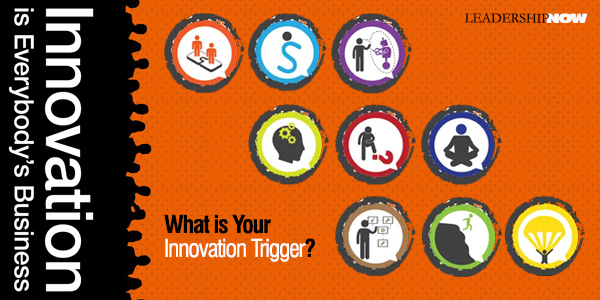 |
 |
08.03.20

Innovation is Everybody’s Business
EVERYONE has ideas. Innovation is within each of us. We just need to unlock it. Many of us have experienced negative reactions to our ideas and so tend to hold back sharing new ones. If we are going to be an innovator, we need to have a healthy relationship with change. Change is an opportunity to innovate. Tamara Ghandour defines innovation as “thinking differently about what’s right in front of you to create an advantage” in her book Innovation is Everybody’s Business. There are opportunities in the functions we perform every day. People at all levels of an organization see things differently and can add value to an organization through innovation. Innovation is not for a select few. To help us ignite the innovative mindset that exists inside of all of us, Ghandour has identified nine styles (or triggers) of innovation that relates to how we approach innovation. (You can discover yours by taking the Innovation Quotient Edge (IQE) assessment on her website. The assessment identifies your top two innovation styles and your single dormant trigger.) I believe, like any of our behavioral proclivities, these triggers are not set in stone as they are not part of our DNA, but preferences that we have developed over time. Nevertheless, these styles are helpful for understanding how we approach and think about and execute on ideas, and importantly how we relate and respond to others based on differences in approaches. “Much like the difference in your overall personality,” Ghandour writes, “you have a unique way of innovating. In fact, there are nine distinct styles of innovation. They show up in your personality, preference, work style, behaviors, and actions.” The nine triggers are:
Identifying and understanding these innovation triggers not only helps you to see what gets your creative juices flowing and ignite your innovative flame, but it also helps you to know how you come across to others. That’s very helpful when it comes to presenting your ideas and working within teams. For example, if one of your two predominant innovation triggers is Risk-Taker, your communication style is declarative and opportunistic. Your language reflects words like “I, me, daring, impact, change, disruptive, I challenge, why not.” It is difficult to make the connections necessary for innovative thinking with the stimulus we receive every day. Our minds react by filtering out what doesn’t fit with what we already know or think. Ghandour offers some tips to help us overcome this confirmation bias. 1. Play your own devil’s advocate.
In addition, she offers this constructive advice: Calm the lizard brain down by letting it know the analysis is coming after you innovate. Don’t sabotage your ideas by jumping to judgment too quickly. There’s a time for that. Let your mind explore the possibilities, then do a reality check. 
Posted by Michael McKinney at 03:01 PM
|
BUILD YOUR KNOWLEDGE
 

How to Do Your Start-Up Right STRAIGHT TALK FOR START-UPS 
Grow Your Leadership Skills NEW AND UPCOMING LEADERSHIP BOOKS 
Leadership Minute BITE-SIZE CONCEPTS YOU CAN CHEW ON 
Classic Leadership Books BOOKS TO READ BEFORE YOU LEAD |